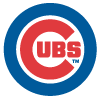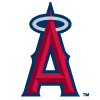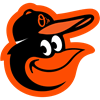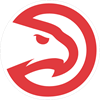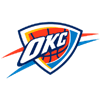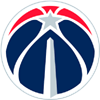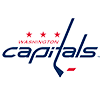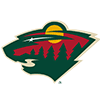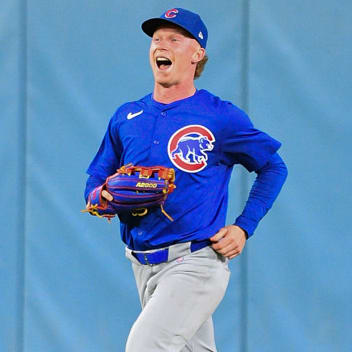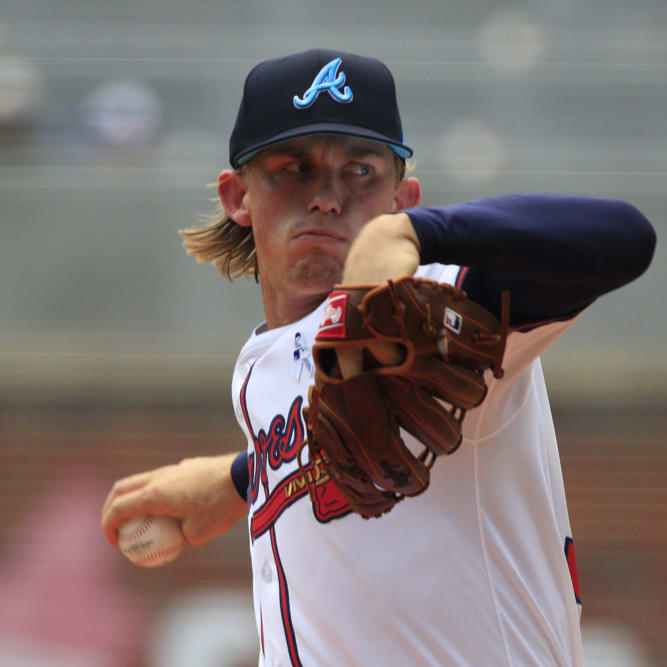After three years of abnormal draft prep, due to either COVID, the owners' lockout or the reaction to MLB using Happy Fun Ball in 2019, we finally have a normal draft prep season. Or do we? There are a number of changes in store for the 2023 season, and we'll lay them out here in one spot, along with our proposed ways to handle them. I polled some of our writers to give their take on what these changes will mean. But before we delve into each change, let's share one note of caution. There can be a tendency to overvalue the impact of one particular change. Let's face it, we all want to be first in identifying a new trend. Clay Link elaborates here:
"I'm in the Joe Sheehan camp of not expecting the new rules to be all that noticeable in the day-to-day MLB product.
The 2023 rules changes will make very little difference in game play. https://t.co/DD9WfuGmJO
— Joe Sheehan (@joe_sheehan) January 24, 2023
Games will be shorter. When we look backward after the season, we will likely be able to see differences in statistical trends, including more stolen bases on the whole. However, I don't expect gameplay to look much different from first pitch to final out, nor do I expect the stats to look much different in the box scores. There are so many other variables in play and some of the changes to the game will be masked/diluted in a one-year sample."
Let's take
After three years of abnormal draft prep, due to either COVID, the owners' lockout or the reaction to MLB using Happy Fun Ball in 2019, we finally have a normal draft prep season. Or do we? There are a number of changes in store for the 2023 season, and we'll lay them out here in one spot, along with our proposed ways to handle them. I polled some of our writers to give their take on what these changes will mean. But before we delve into each change, let's share one note of caution. There can be a tendency to overvalue the impact of one particular change. Let's face it, we all want to be first in identifying a new trend. Clay Link elaborates here:
"I'm in the Joe Sheehan camp of not expecting the new rules to be all that noticeable in the day-to-day MLB product.
The 2023 rules changes will make very little difference in game play. https://t.co/DD9WfuGmJO
— Joe Sheehan (@joe_sheehan) January 24, 2023
Games will be shorter. When we look backward after the season, we will likely be able to see differences in statistical trends, including more stolen bases on the whole. However, I don't expect gameplay to look much different from first pitch to final out, nor do I expect the stats to look much different in the box scores. There are so many other variables in play and some of the changes to the game will be masked/diluted in a one-year sample."
Let's take a look at each rule change in detail.
RULE CHANGES
1. The Balanced Schedule
Major League Baseball is moving to a more balanced schedule in 2023, resulting in fewer divisional games and a lot more interleague games. Here are the noteworthy details:
- Each team will play 13 games against each divisional opponent, down from 19 games. So, to pick a team at random, Cleveland will go from having 76 games against their AL Central brethren to 52 such games this year.
- The majority of those shifted games will be moved to interleague matchups, going from 20 games to 46 games. There will be four games (two home and two away) against each team's designated "natural rival" and three games each against the remaining 14 interleague teams. For those remaining 14 series, seven will be at home and seven away, with the teams switching home fields next year. For example, the Yankees will host the Giants on Opening Day this year, so next year they'll travel to San Francisco.
- The remaining games against intraleague foes declines by two, from 66 to 64.
- All 30 teams are scheduled to play on Opening Day, the Fourth of July, Jackie Robinson Day and Roberto Clemente Day. This isn't necessarily a change or something that has strategic heft — I'm just happy to see everyone play on those days. If they could add Memorial Day and Labor Day to the list, I'd be happy.
The ramifications from this could be noteworthy, especially for the more extreme cases. The Red Sox were 26-50 (!) against the AL East last year — while I still don't think that they're set up well for 2023, getting 24 fewer games against their division should help them. Conversely, the Cardinals were 20 games over .500 against the NL Central but four games over .500 against the rest of baseball. 12 fewer games against the Pirates and Reds won't help.
Todd Zola wrote an excellent "Z Files" column about the impact of the schedule changes on pitching and suggested that it might be more difficult than we initially expected to tweak our formulas. There are so many different inputs, including the park factors of the teams, when factoring these changes. So perhaps the changes might have less of an impact than one might think — this is going to be a continuing theme of this article.
If there's going to be a change, it'll probably affect AL East and the Central divisions, as James Anderson suggested:
"I'm not downgrading AL East pitchers at all anymore, and not giving notable bumps to the Central division guys."
2. Defensive Shift Limits
Nothing triggers a former player-turned-broadcaster more than "The Shift." Former hitters hated seeing balls in play that almost always used be to hits turned into outs, particularly former left-handed hitters. Former pitchers especially gnashed and wailed against the shift whenever a batter would beat it. They'll have less to complain about this year, as MLB is attempting to limit a lot of the shifts in the game.
- The defense must have a minimum of four infielders, with at least two infielders on each side of the diamond. Those infielders must be within the outer boundary of the infield while the pitcher is on the mound.
- Infielders cannot switch sides of the infield to put a better fielder on the side of the diamond where the batter is more likely to hit it.
- Teams are allowed to bring an outfielder to add an extra infielder if they want to — think of late-inning situations where teams will sometimes bring in an outfielder to prevent any groundball from getting through. You might think this isn't going to happen more often as a result of this rule, but Gordon Wittenmyer of the Chicago Sun-Times suggested this might happen more often than anticipated, especially in spring training and early in the season as teams experiment with new alignments. This is more likely to occur with teams that have a player like Luis Robert roaming in center field who can cover more territory.
- The penalty for violating the alignment rules is to allow the batting team a choice: they can keep the result of the play, or they can choose for that pitch to be an automatic ball.
Jason Collette used both spray charts and xBA - BA as measures back in a September "Collette Calls" column to identify hitters who had been hurt by the shift the most. The preponderance of hitters potentially helped by this change are left-handed. However, as Jason cautions, beware The Law of Unintended Consquences before significantly bumping up or lowering a player's ranks because of this rule change. Teams and players have ways adapting that negate some of the intentions of this change.
3. Bigger Bases / Pickoff Restrictions
Major League Baseball would like to increase the number of stolen base attempts and the success rate of those attempts. To that end, they made two major changes.
- The size of the bases has been increased from 15 inches square to 18 inches square, which also lessens distance between the bases by 4.5 inches.
- Pitchers are limited to two free pickoff attempts or step-offs (termed as "disengagements") per plate appearance. After that, they can make a third attempt, but if it's unsuccessful the runner will automatically will advance and it'll be termed a balk.
The latter change could also be rolled into the Pitch Timer rule a little bit, but I'm citing it here for the impact it could have on the running game. Once again, we turn to "Collette Calls" for some guidance on what might happen regarding this rule change. Jason Collette dug into what happened in the minor leagues in 2022 with the rule changes implemented there last season. Stolen bases did increase across the board, with certain hitters benefiting more than others. Pay close attention to his focus on sprint speed metrics, notably on home plate to 1B times.
4. Pitch Timer
I love baseball, and I especially love going to live games. I want more baseball, not less of it, but it seems that MLB's top priority since Rob Manfred became the Commissioner is to shorten games. I understand that one goal here is to provide more baseball for the time invested, but frankly, it's a pain to get into and out of most stadiums anyhow. Once I'm there, I'm in no rush to leave. I realize I'm not necessarily in the majority here, but I don't want the implementation of a pitch clock, and it's going to really aggravate me when a game is decided on an automatic ball or strike due to the pitch clock.
Nonetheless, it's here for at least this year, and perhaps to stay. Here are the details:
- There will be a 30-second clock between batters.
- Pitchers have 15 seconds between pitches when the bases are empty, and 20 seconds between pitches when there are runners on base.
- Batters must be in the box and ready to face a pitch by eight seconds.
- Teams are still limited to five mound visits before the ninth inning, with an extra mound visit granted in the ninth inning if the first five visits have been used.
You can see how the "disengagements" limit from above also ties into this rule. According to MLB, the average minor league game has been 26 minutes shorter following the implementation of the pitch clock.
This rule will likely have its biggest impact in tight-and-late situations where every pitch matters. As James Anderson suggests, closers could be disproportionately affected:
"Kenley Jansen, Giovanny Gallegos, Kyle Finnegan, Devin Williams and Aroldis Chapman make up five of the seven longest average pitch tempos (on Baseball Savant) in baseball. Shohei Ohtani, Luis Garcia, Corbin Burnes, Yu Darvish and Alek Manoah were the five slowest among pitchers who threw 1,000+ pitches. This could be particularly problematic for closers, who may be out of rhythm in important situations or may get hurt trying to stay on rhythm. It's not a disqualifier, but I think it should be factored into draft decisions."
Perhaps we'll see more walks, more stolen bases and more blown saves as a result of the clock. I also wonder if we'll see declines in velocity across the board, as pitchers will get less time to recover between pitches. If that happens, then that would lead to the biggest changes in the game. Offensive metrics have tracked poorly as pitchers have gained velocity steadily over the last decade. This could be one advancement that turns back the clock, at least until pitchers learn to adapt.
PARK CHANGES
The Orioles significantly changed the dimensions at Orioles Park in Camden Yards last season, and the results were noteworthy in how much right-handed power declined. We were aware of the changes for most of draft season, but I don't think we fully accounted for the degree of change. With that in mind, here are the park changes that I know of for 2023.
1. Detroit - Comerica Park
The Tigers are moving the center field wall in by 10 feet and lowering the fences in center, right-center and right fields. At 412 feet out, the center field wall still remains one of the deepest in the game, but the Tigers are hoping that Comerica is a little less extreme in favor of pitchers, at least against left-handed batters.
2. Toronto - Rogers Centre
There will be numerous changes to the fences in Rogers Centre — in some cases the walls will be moved in, but along with that the height of the fences will be raised. Moreover, the park's fences will not be symmetrical, so expect a handful of odd bounces and caroms to navigate, something that might be especially difficult for opposing outfielders. The Blue Jays made a point of improving their outfield defense, trading away Teoscar Hernandez and Lourdes Gurriel Jr. while adding Kevin Kiermaier and Daulton Varsho. They probably had these park changes in mind when completing these deals.
3. New York Mets - Citi Field
The Mets are bringing in a 50-foot section of right field in by about 8.5 feet to make room for a new fan-experience area patterned after "speakeasies," where well-heeled fans will have personal TVs and a seperate menu. The money grab, er, fan experience, will likely raise the power numbers at a notoriously difficult place to hit for power.
---
I declined to comment on possible changes to the ball, because I'm not comfortable of my command of the facts on last year's ball and even less confident in my ability to predict what baseball will do next.
What consequences do you foresee from these rule changes and park changes? If there's a park change that I missed, please let me know in the comments.








